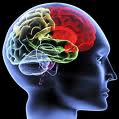Over the last 12 months significant interest and research in mild TBI and concussion, including expanding the horizon for blood-based biomarkers, has increased. Because TBI, especially mTBI and concussion, present significant challenges to accurately, reproducibly and rapidly establish diagnosis and provide serial monitoring the need for objective, non-invasive biomarkers exposing underlying fundamentals of host defense responses to the trauma has mushroomed. Researchers from Baylor College of Medicine, Houston, TX and the University of Pennsylvania, Philadelphia reported that plasma levels of calpain-cleaved aII-spectrin N-terminal fragment (SNTF) was elevated in 7 of 17 mTBI cases but in no uninjured controls (Front. Neurol., 18 November 2013 | doi: 10.3389/fneur.2013.00190). However, specificity for mTBI was questioned because SNTF levels were increased in some individuals with orthopedic injuries.
Swedish and UK scientists, using techniques developed at Quanterix Corp, Lexington, Massachusetts, reported in a paper published in JAMA Neurology (JAMA Neurol. doi:10.1001/jamaneurol.2014.367) that total tau (T-tau) correlated well with concussion in plasma of professional hockey players in Sweden, and influenced decision of players for return to play. In addition to T-tau they evaluated several other protein-based biomarkers, which did not correlate well. This paper is important since techniques developed at Quanterix used SIMOA (Single Molecule Array) technology an ultrasensitive, multiplexed technique for detection of proteins and nucleic acids. They concluded that since sports-related concussion in professional ice hockey players is associated with acute axonal and astroglial injury, T-tau may prove useful in larger studies.
